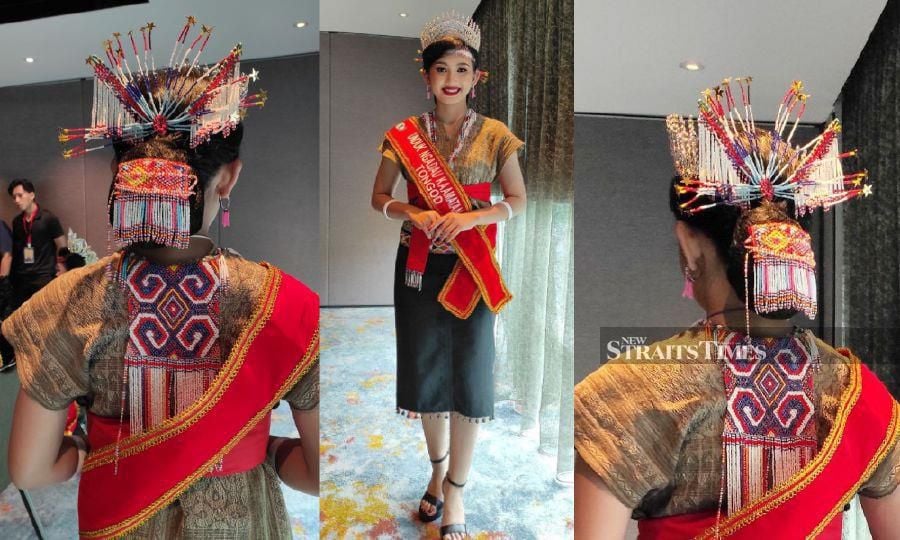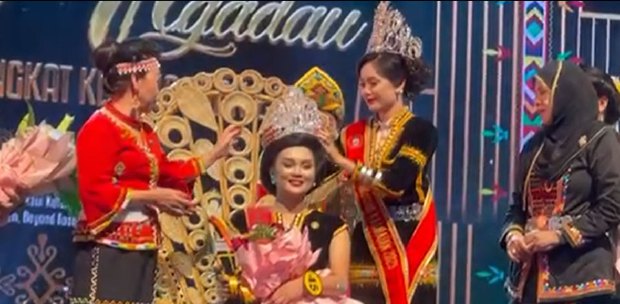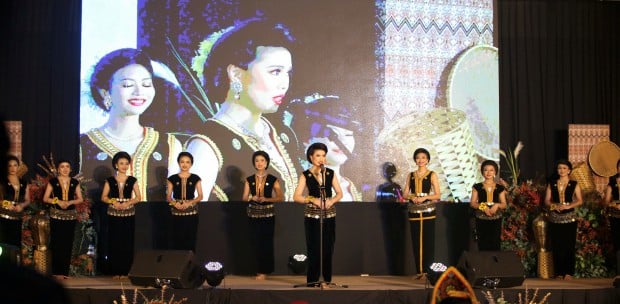KOTA KINABALU: Elviana Gunong is on a mission to promote the unique Sabung Nu Rumanau attire through the prestigious Unduk Ngadau Kaamatan (UNK) pageant.
Sabung Nu Rumanau is the traditional attire of the Rumanau, one of the many ethnic groups in Sabah, residing mainly in Tongod and Kinabatangan.
Representing the Tongod district for this year's national UNK pageant, the 24-year-old teacher shared that a collective effort from the community has allowed her to delve into the unique culture of the Rumanau group and their traditional attire.
"I went to three different villages in Tongod to deepen my knowledge about the Rumanau and their traditional attire. I'm grateful for the unwavering support of everyone surrounding me, my colleagues, and local villagers in Tongod, which greatly facilitated my learning journey.
"So here I am confidently wearing Sabung Nu Rumanau, carrying a big responsibility of showcasing the authenticity of the Rumanau traditional attire. I also hope to raise awareness and encourage the preservation of this traditional attire.
"According to sources this Bayangkis (woven cloth) is more than 100 years old," she said when met during the UNK 2024 registration at a hotel here.
Explaining further, Elviana said the Bayangkis is the main garment made from 'kapas landa' (cotton). It has a central opening for the head and a side opening. The front part covers the abdomen, whereas the back part is longer surpassing the waistline.
"There are two types of patterns that can be seen on Bayangkis: the 'inambau' pattern and the 'binutitin' pattern. This Bayangkis (worn by Elviana), features the 'inambau' pattern," she said, adding that Bayangkis is worn by women during special ceremonies such as weddings and also used by Bobolian (ritual leaders) when performing ritual ceremonies such as 'momiau' and 'monogit'.
To secure the Bayangkis, Elviana said a red cloth known as Kasumba is wrapped around the waist as a belt and tied at the front.
A 'tapi moitom' (black sarong) with bells attached to the edge of the skirt is worn to complete the outfit.
Sabung Nu Rumanau also offers unique head and neck accessories that could easily attract attention and spark curiosity.
"Among the head accessories worn is known as 'angkup' to tidy up the wearer's hair. Other accessories are known as 'rintik', 'tinanda' and 'kukudu'.
"Interestingly the Rumanau tribe believes that 'rintik' and 'tinanda' are 'crowns' given to selected women.The 'kukudu' worn around the head is believed to enhance the look of the wearer. All these head accessories are made of colored beads," said the teacher, whose original intention was to participate in the Unduk Ngadau pageant merely to gain new experiences.
According to Elviana, the Rumanau women also wear Gantad (earings) and neck accessories known as 'kakaray', 'linangkuid' and 'inurabaian'.
The 'inurabaian' is connected to the 'kakaray' and placed on the back of the wearer.
The Unduk Ngadau pageant has always been associated as the highlight of the month-long Kaamatan festival in Sabah with the final event scheduled on May 31.
Beginning 2015, the UNK committee led by Kadazan Dusun Cultural Association (KDCA) Women Council chairperson Joanna Kitingan pushed the idea of going back to basics.
They started to emphasise on contestants wearing the authentic traditional costume of the district they represent.
The initiative resulted in numerous contestants unveiling seldom-displayed traditional clothing on the Unduk Ngadau stage.





